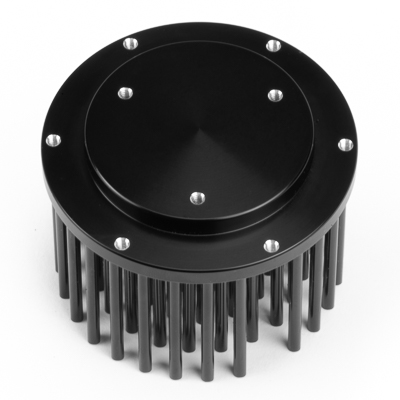Heatsink Surface Treatment

Although there have been arguments made for the use of particular colors over others when anodizing heatsinks made from aluminum, the color choice for oxide plating should be considered primarily aesthetic. That's because the main cause of thermal energy dispersal from heatsinks works by air flowing across their surface - a process called convection - and not by the heat radiating off of the fins. Because of this, the color of a manufacturer's heatsink surface treatment has limited functional value.
One should be cautious before deciding on a copper heatsink surface treatment that is supposed to dramatically increase the device's thermal conductivity. While often times precious metals are used to prevent copper rust and boost the heatsinks overall effectiveness, there seems to be only marginal necessity for this type of heatsink surface treatment. This is first due to the fact that copper will not likely deteriorate in the dry heatsink environment. Secondly, there is not much conductivity added by such a thin layer of surface treatment, making the additional money spent for this feature rather unnecessary.
For Your Next Project, Contact CoolianceToday!
High reliability thermal solutions & precision metal products.
